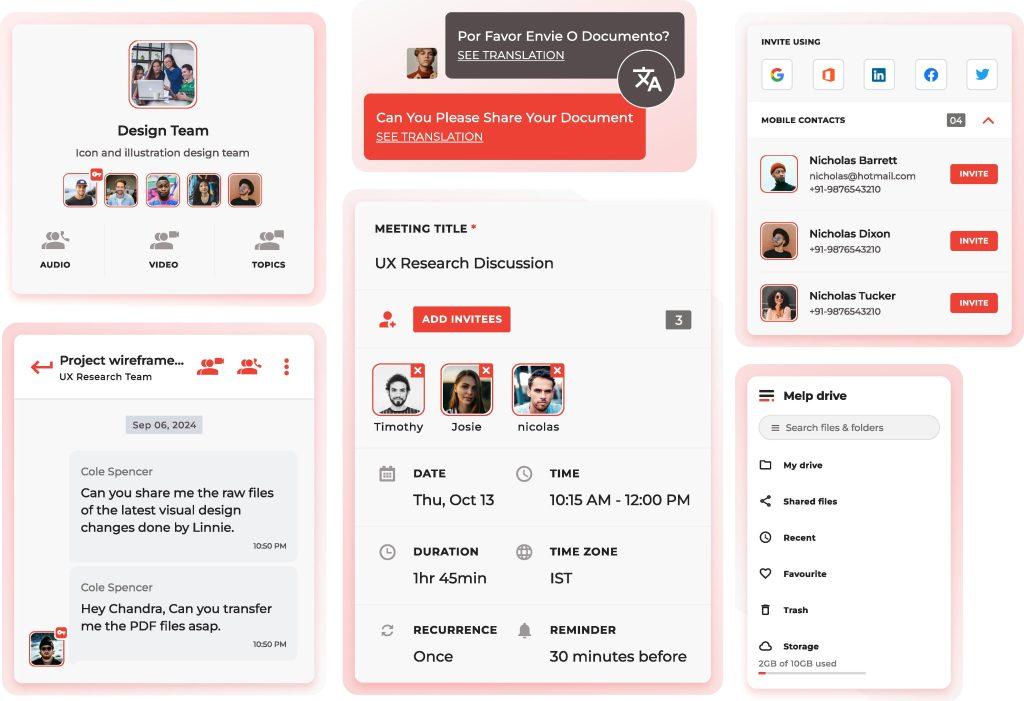MelpApp: A Game-Changer for Team Communication and Collaboration
In today’s fast-paced business world, effective communication and collaboration are essential for success

In today’s fast-paced business world, effective communication and collaboration are essential for success

Let me ask you something. Are you a business owner? Are you a team lead? Are you a member of a team? If you are any of these, let me directly put it

To add featured content go to Theme Options -> Homepage (Featured) and turn the switch on then add the content you want for each section.
In most modern workplaces, the first instinct to fix communication challenges is simple — install a business messaging app. It feels right: faster chats, fewer emails, quicker updates. But after a few months, something strange happens. The team is talking more… yet accomplishing less. If that sounds familiar, your messaging tool might not be failing
Not long ago, businesses believed that using more tools meant getting more done. Marketing used one app, sales used another, operations had their own system — and everyone thought it worked. But as teams grew and workflows got more complex, this setup started showing cracks. What was once “efficient” slowly turned into a daily struggle
Introduction: When Productivity Tools Become Productivity Killers Every business starts with good intentions — to move faster, collaborate better, and stay connected. So, leaders add tools: one for communication, another for project tracking, one for HR, and another for client meetings. Before long, the company has a dozen subscriptions, each solving one small problem —
Introduction: The Invisible Problem Behind Every Missed Deadline Picture this: a project runs behind schedule. Deadlines slip. Fingers start pointing. Everyone was involved, yet somehow, no one was responsible. If that sounds familiar, you’re not alone. In modern workplaces, accountability is quietly fading — not because people don’t care, but because the lines of ownership
In the age of hybrid work, one thing has become painfully clear — collaboration has become both easier and harder at the same time. We have more tools than ever to connect, but somehow, teams still feel disconnected. Messages scatter across apps, meetings multiply, and important updates disappear into digital noise. That’s where team collaboration
There’s a moment most managers dread but rarely admit: watching a top performer walk out the door and realizing the problem wasn’t pay, benefits, or the job description — it was the chaos that made coming to work unbearable. Chaotic work environments quietly erode motivation, slow workplace productivity, and push your best people into safer,
Introduction Work–life balance is a top priority for employees and employers today. Work doesn’t only happen in an office anymore, and the line between work and personal time can blur fast if it’s not managed well. When organizations support people in balancing their professional and personal responsibilities, performance improves, burnout drops, and the culture gets
Introduction The modern workplace is changing faster than ever. Remote technology, shifting employee priorities, and a competitive job market have transformed what people expect from their employers. Among these changes, one factor stands out as a true game-changer: workplace flexibility. For companies aiming to retain top talent, the ability to offer employees greater control over
When I first started working from home, I thought it would be easy. I mean, no commute, comfy clothes, and lunch in my kitchen—it sounded perfect. But after a few weeks, I hit a wall. I wasn’t focusing like I used to. I was either working too much or not enough. Over time, though, I
Hybrid work isn’t just a trend anymore—it’s reality. Some teammates are in the office, some are remote, and others are logging in from different time zones. This setup offers flexibility, but without the right practices, collaboration can easily become frustrating. If your team’s ever dealt with unclear updates, communication gaps, or that awkward “Who’s handling